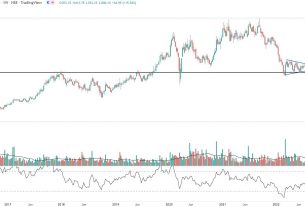
Volatility, one word that defines our very reason to get into and get glued to the asset class of equity.
What is Volatility?
In simple words, it is the degree of change in the price of equity or index.
Because of the inconsistent sequence of type of change (big, small, up, down) we get opportunity to trade into these equities and indices. While as an inherent characteristic it is important, Volatility as a measure also has its own significance and utility.
The volatility figure calculation is not that big a mathematical complication. Internet is filled with calculators that give us this figure given the last 20 days data. You can input any number, I use 20 days annualized volatility because it in a way represents an expiry.
Volatility measure would be anywhere between 0-100%. Higher the measure, more violent is the stock or index and lower the number calmer is the stock or index. This the 1st type of volatility popularly known as Historical Volatility or Realized Volatility.
Significance of Realized Volatility is very simple. If a stock is very low on Realilized Volatility, expecting a big move on a consistent basis in short term is a bit over asking. Similarly, if we are betting against the movement via selling options, we might want to stay away from the stocks which are in our list with higher reading on Realized Volatility.
Now, let us understand the 2nd type, Implied Volatility. Options from the equity derivatives market use the volatility measure as an input for computing the premium. Premium at which an option trades is a readily available information, so are the other 4 inputs used for option premium computation (stock/index price, interest rate, time to expiry and strike price).
Considering this the Volatility figure now back calculated for a using Premium and the 4 other inputs is called Implied Volatility. Why Implied? Because it is implied from the premium at which the index or the stock is trading. Again, a lot of option analytics software has this information readily available.
It should be same as the Realized Volatility, right? Well, it is seldom same but mostly similar. Reason for this is the volatility figure plugged into the option premium is the estimate of the realized volatility for near future.
So, in case there is a known event which could raise the size of movement in the stock or the index or a fear big move (often times downwards), this figure of Implied Volatility would be much higher than the past Realized Volatility.
Apart from the event times. If in normal course the Implied Volatility is on a rise one can safely say that a possibility of a big move is getting accounted for in near term. It is the law of nature that anything around us takes very small time in making but it is very fast to destroy. Just like that, rising Implied Volatility means expectation of destruction in price (What the experience says 9/10 times).
That is the utility of Implied Volatility, a rising trend in implied volatility is expectation of price decline (time to hedge and tighten stop losses). Similarly, falling trend in Implied Volatility means there is calm expected meaning one out of two things, Rise in price or Consolidation. Buy trades would be a good idea around this time.
These two types of volatility are predominantly followed and used by many traders to assist their trading logics.
Disclaimer: The views and investment tips expressed by investment expert on Moneycontrol.com are his own and not that of the website or its management. Moneycontrol.com advises users to check with certified experts before taking any investment decisions.

